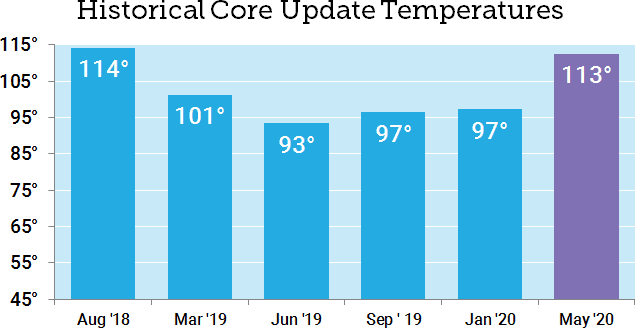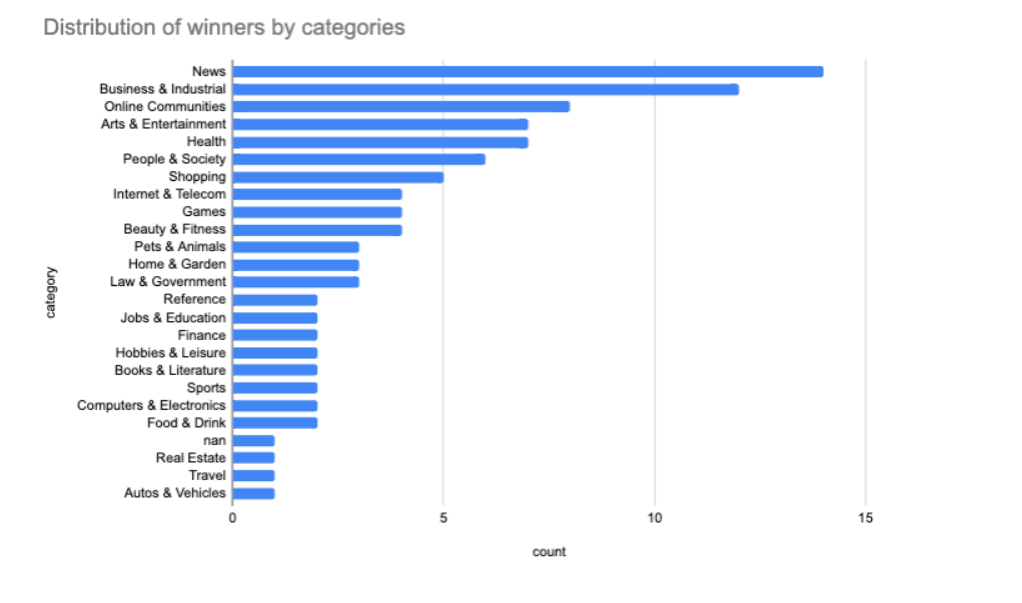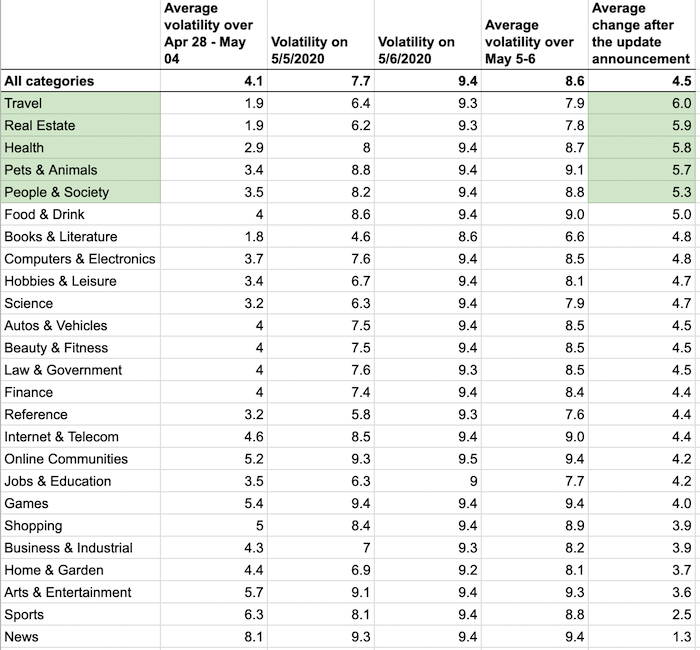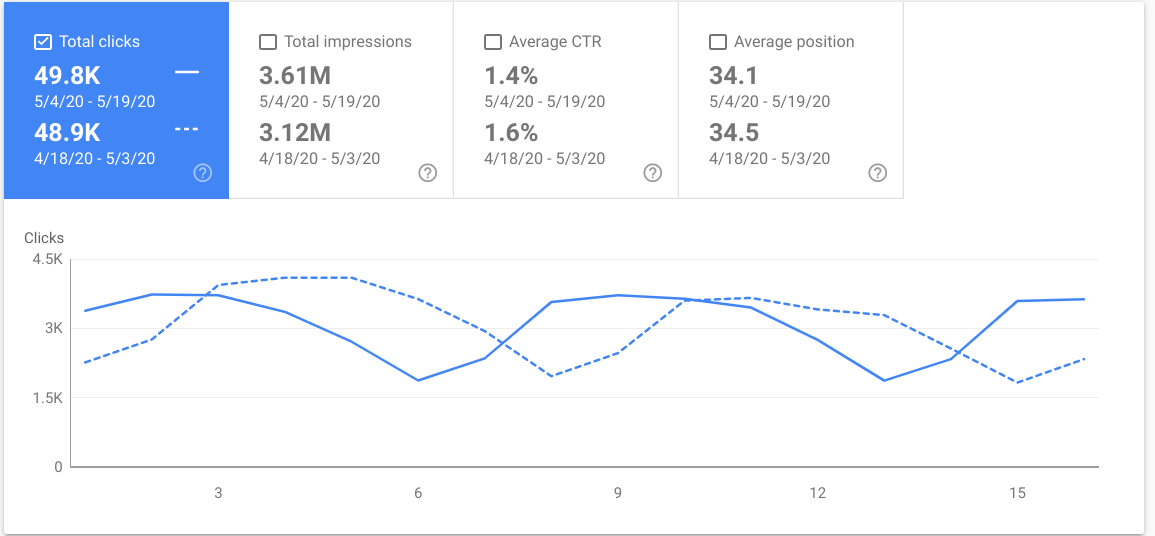Google’s May algorithm update was big.
As a matter of fact, we haven’t seen this level of SERP volatility since the Medic update back in the fall of 2018.

But do we know anything more scientific than “It was big and certain websites were definitely affected”?
Sort of. Maybe.
We know stuff happened, but the data is murky
We SEOs are always so hungry to get to the bottom of Google’s updates. It’s like a murder mystery that we need to make sense of.
Who did it? What was the motive? Who were the victims?
But the problem is that until the dust fully settles and we have enough data to really understand what happened (which can take months), we’re all sort of speculating based on incomplete data and anecdotal evidence.
For example, SEMrush claimed that “the biggest winner was the News sector.”

While Neil Patel’s data says the least impacted was … the news sector.

Yikes! How could two sets of data be perfectly contradictory?
Pinning down causation vs. correlation
The problem is that we are trying to provide guidance on a single variable (an algorithm update) without the ability to isolate that variable to see what it truly did.
In other words, we would be able to understand what the May algorithm update did if all other factors remained constant. But unfortunately, there are thousands of factors that do not remain constant, leaving us with a minefield of opportunities to mistake correlation for causation. We are easily thrown off-course by variables out of our control like:
- Natural fluctuations that coincide with the update.
- Unknown changes to the sites being evaluated.
- Not enough data, or poor interpretation of data.
Generally speaking, we make assumptions about algorithm updates based on large changes in keyword rankings, both positive and negative, for the most impacted websites. We’ll also look at the numbers of positive and negatively impacted websites within certain industries in order to understand if there was a particular theme to the update.
For example: “X websites in Y industry improved their rankings” so that we can try to understand if there was a theme to the update. Our major goal is to be able to say definitively “X industry was impacted because of Y.”
And eventually, we do get there, but it takes time to collect and analyze the data.
A great real-life example was the timeline of the “medic update” back in August of 2018. Initially, it was labeled the “medic update” because it seemed to disproportionately affect health and wellness websites. We later found out that the update covered all YMYL (Your Money Your Life) websites, a much broader set of domains and content types.
These websites were impacted based on how well they satisfied E-A-T (Experience, Authority, Trustworthiness) guidelines. In other words, we later found out that websites that fit into the YMYL category were being judged not just by the relevance of their content, but by the correctness of that content. Their E-A-T assessment played a large role in the level and direction of the impact.
We may eventually get to a point where we have the same level of insight into this latest update.
So what do we do with the information that we do have?
The answer is to be careful with what you read. We may have some idea of what happened, but we need to appreciate that we’re trying to make assumptions with initial data and on an uncontrolled experiment. The worst thing we can do is to either prematurely celebrate or scream “the sky is falling” and make a bunch of irreversible decisions without all the facts.
The best thing that you can do is evaluate your data.
The rollout is complete, so our data will start to become more and more reliable over the next few weeks and months. What we really need is to have enough data to smooth out any anomalies or fluctuations that could steer us down the wrong path.
Recommendation 1:
Compare search impressions and clicks in Google Search Console for equal time periods before and after the update. Understand that two weeks one way or the other is hardly reliable, but you may see some interesting trends.

Isolate any and all anomalies in your data and investigate changes in average position and CTR for pages and queries with abnormal deviations in performance. Continue to monitor for the next few weeks; the more data the better.
Recommendation 2:
Check your target keyword fluctuations in your tracking tool. Look for highly unusual fluctuations. Small fluctuations up or down are completely normal – keep an eye out for true anomalies.

Our target keywords show an uptick coinciding with the algo update. This may or may not be coincidental – our target keywords have a long history of regular fluctuations within this range. Being that our overall site traffic is more or less flat, this increase may be isolated to a limited number of pages.
Recommendation 3:
Check your untargeted organic keyword fluctuations in an SEO tool like Ahrefs. Ahrefs will show you the largest daily keyword fluctuations, organized by the estimated impact on traffic. Any massive changes will be logged here on a daily basis.

Our total page 1 ranking keywords trend shows nothing out of the ordinary or coinciding movements with the update.
It seems that we were largely unaffected by this update (so far), and if we were, it may have been a slight gain for a select portion of the site.
Some things that MIGHT have happened
Having spent this entire post cautioning against reporting on incomplete data, here is what we’re seeing so far (with the knowledge that this will need further monitoring):
- The impact seems to be more broad than usual, covering a wide range of industries.
- Offline entertainment may have been broadly impacted – think travel and recreation. Some have speculated it is COVID-related, but this will need more investigation.
- If you were impacted, Google’s guidance is that there is nothing specific you can do to reverse the impact. Google’s guidance on updates usually follows these lines, with a broad recommendation to “write good content.”
In summary, there is no doubt that this update was significant, impacting some websites drastically. While there doesn’t seem to be a crystal clear theme to this update, yet, it’s possible one will emerge over time. In the meantime, keep a hawk’s eye on your data and try not to make any rash decisions until we know more.





